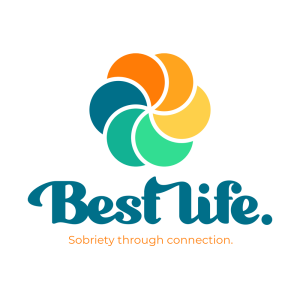In the hustle and bustle of daily life, we often forget to stop and take a look at ourselves. Are we playing to our strengths? Are we conscious of areas that need a little nurturing? Do we look after ourselves? Do we have respect for our bodies?
This Self-Care Sunday, let’s dive into a guided reflection to acknowledge our strengths and identify opportunities for personal growth.

Self-awareness is an essential part of personal development. Knowing your strengths and recognising areas for improvement can significantly shape your life. So, how can you make this reflection meaningful?
Journaling: Make a list of your strengths. Are you empathetic? A good listener? Detail-oriented? Write it down.
Many of us are quick to identify our faults and shortcomings but slow to recognise our own strengths. That’s where journaling comes into play as a handy tool. Sitting down with a pen and paper—or a digital device if that’s more your speed—provides an intimate space to explore your own psyche. Take this time to list out your strengths, no matter how big or small. Are you empathetic? A great communicator? Exceptional at problem-solving? Write it all down.
Not sure where to start? Think about compliments you’ve received, or times when you’ve felt particularly effective or fulfilled. These moments can be excellent indicators of your strengths. Don’t rush this process; it’s more important to be thorough and accurate. Your strengths are part of your core, and acknowledging them is an empowering act that reaffirms your self-worth. So grab that journal, settle into a comfortable space, and let the introspection begin.

Areas for Growth: Be brutally honest with yourself about what you need to work on. These are not weaknesses, but opportunities for growth.
Let’s clear one thing up: identifying areas for growth is not an exercise in self-criticism or defeat. Rather, it’s an empowering exercise that opens up pathways for personal improvement. Don’t look at these areas as ‘weaknesses,’ but as ‘opportunities for growth.’ The key here is to be brutally honest with yourself. This isn’t about judgment; it’s about self-awareness, which is the first step to any meaningful change.
What are those habits, tendencies, or skills that could use a little sharpening? Maybe you need to work on time management, or perhaps you want to be better at maintaining relationships. Acknowledge these without attaching any negativity to them. Remember, every master was once a beginner; every expert started out as a novice. By highlighting these areas, you’re setting the stage for your future success.
Identifying opportunities for growth allows you to pivot and adjust, so you’re always moving in a direction that aligns with your personal or professional goals. So, don’t shy away from this process. Embrace it. It’s all part of the ongoing journey of self-improvement, and there’s nothing more rewarding than watching yourself grow and evolve over time.

Action Plan: Draft a simple action plan on how to develop these areas, and consider setting achievable goals for yourself.
Once you’ve identified your areas for growth, the next step is not just to acknowledge them, but to act on them. Here’s where the “Action Plan” comes into play. This isn’t your run-of-the-mill to-do list. Nope, it’s your strategic roadmap to becoming a better version of yourself. But don’t fret; it doesn’t need to be complicated. Simplicity is your friend here.
Start by choosing one or two areas you’d like to focus on first. You can’t boil the ocean, so be realistic about what you can achieve in a set period. Once you’ve selected these focus areas, set achievable goals tied to them. Remember, ‘achievable’ is the keyword. Pie-in-the-sky dreams might feel inspiring, but they can also be overwhelming and paralysing.
So, how do you make these goals achievable? SMART goals are a good framework. Make them Specific, Measurable, Achievable, Relevant, and Time-bound (we spoke about these pointers in the Best Life app a few weeks back). For instance, if you need to work on time management, a SMART goal could be: ‘I will dedicate the first 30 minutes of my workday to planning and prioritising tasks for the next two weeks.’
Next, identify the resources you might need. Do you need to read a particular book, consult with someone more experienced, or perhaps take a short course? Make a list.
Finally, establish a timeline. When will you check in on your progress? Weekly? Monthly? Set reminders for these check-ins. Treat them as non-negotiable appointments with yourself. During these sessions, evaluate what’s working, what isn’t, and adjust your sails accordingly.
This action plan is your commitment to growth. Print it out, pin it up, make it your phone’s wallpaper—do whatever you need to keep it front and center. This way, you’re not just stating what you’d like to improve; you’re laying out how you plan to get there.

Acknowledging your strengths and areas for growth is a proactive step toward living your best life. Not only does it contribute to self-awareness, but it also allows you to be in charge of your personal growth. So why wait? Grab a journal and let’s get started!

